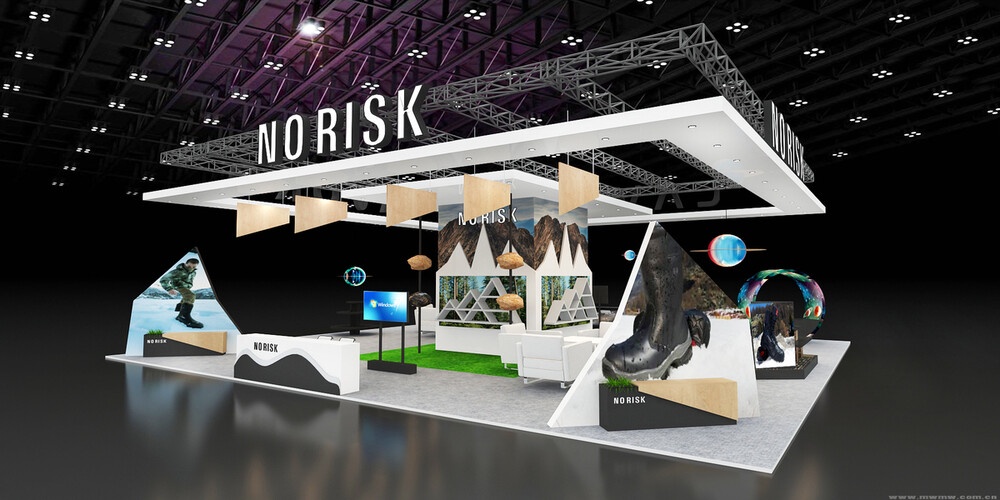In today's world, sustainability has become a paramount consideration across all industries. From manufacturing to retail, individuals and businesses alike are striving to minimize their environmental impact and embrace eco-friendly practices. This shift towards sustainability is particularly evident in the realm of exhibition stand building, where innovative green solutions are being implemented to create visually stunning displays while minimizing environmental harm. In this article, we delve into the realm of sustainable exhibition stand building, exploring eco-friendly materials, design strategies, and best practices to create impactful displays with minimal environmental footprint.
Introduction to Sustainable Exhibition Stand Building
Exhibitions and trade shows serve as crucial platforms for businesses to showcase their products and services, attract potential customers, and forge valuable connections. However, the construction and dismantling of exhibition stands often result in significant waste generation and environmental degradation. Recognizing this challenge, forward-thinking companies are adopting sustainable approaches to stand building, aiming to reduce waste, conserve resources, and promote environmental stewardship.
Eco-Friendly Materials
One of the cornerstones of sustainable exhibition stand building is the use of eco-friendly materials. Traditional stand construction often relies on materials like plywood, plastics, and aluminum, which are resource-intensive to produce and can have detrimental environmental impacts. In contrast, sustainable alternatives such as recycled cardboard, bamboo, reclaimed wood, and biodegradable plastics offer viable options for creating visually striking displays without compromising environmental integrity.
Recycled cardboard, for example, is lightweight, versatile, and can be easily customized to fit various design requirements. Bamboo, known for its rapid growth and renewable nature, is gaining popularity as a sustainable building material for exhibition stands. Reclaimed wood sourced from responsibly managed forests adds a rustic charm to stands while minimizing the demand for virgin timber. Additionally, biodegradable plastics derived from plant-based sources offer a sustainable alternative to traditional petroleum-based plastics, reducing reliance on fossil fuels and mitigating plastic pollution.
Design Strategies for Sustainability
In addition to selecting eco-friendly materials, thoughtful design plays a crucial role in creating sustainable exhibition stands. By incorporating principles of sustainability into the design process, exhibitors can minimize waste, optimize resource utilization, and maximize energy efficiency.
Modular Design: Adopting a modular design approach allows for the reuse and reconfiguration of stand components across multiple exhibitions. Modular stands can be easily disassembled, transported, and reassembled, reducing the need for new materials and minimizing waste generation.
Minimalist Aesthetics: Embracing minimalist aesthetics not only lends a contemporary appeal to exhibition stands but also reduces the consumption of materials. Simplified designs with clean lines and streamlined structures require fewer resources to construct while maintaining visual impact.
Energy-Efficient Lighting: Lighting accounts for a significant portion of energy consumption in exhibition stands. By incorporating energy-efficient LED lighting fixtures and sensors that adjust brightness based on ambient light levels, exhibitors can minimize energy usage and reduce their carbon footprint.
Biophilic Design Elements: Integrating biophilic design elements such as living green walls, potted plants, and natural materials fosters a connection with nature and enhances the overall ambiance of exhibition stands. These elements not only contribute to a more sustainable aesthetic but also improve air quality and occupant well-being.
Best Practices for Sustainable Exhibition Stand Building
In addition to material selection and design strategies, several best practices can further enhance the sustainability of exhibition stand construction and operation.
Lifecycle Assessment: Conducting a lifecycle assessment helps identify potential environmental impacts associated with stand construction, use, and disposal. By evaluating the environmental footprint of materials and processes, exhibitors can make informed decisions to minimize environmental harm.
Waste Management: Implementing effective waste management practices is essential for reducing landfill waste and maximizing resource recovery. This includes segregating recyclable materials, composting organic waste, and partnering with waste management companies to ensure proper disposal and recycling.
Collaboration and Education: Collaboration among stakeholders, including designers, builders, exhibitors, and event organizers, is crucial for promoting sustainable practices throughout the exhibition industry. Educating stakeholders about the benefits of sustainability and sharing best practices fosters a culture of environmental responsibility.
Certifications and Standards: Certifications such as LEED (Leadership in Energy and Environmental Design) and BREEAM (Building Research Establishment Environmental Assessment Method) provide frameworks for evaluating and certifying the sustainability performance of exhibition stands. Adhering to these standards demonstrates a commitment to environmental stewardship and enhances the credibility of exhibitors.
Conclusion
Sustainable exhibition stand building represents a paradigm shift in the way businesses approach event marketing. By embracing eco-friendly materials, adopting thoughtful design strategies, and implementing best practices, exhibitors, including exhibition stand builders in Dusseldorf, can create visually stunning displays while minimizing their environmental footprint. As the demand for sustainable solutions continues to grow, the exhibition industry has an opportunity to lead by example and pave the way for a more sustainable future. Through collaboration, innovation, and a shared commitment to sustainability, we can build a world where exhibitions not only inspire and engage but also contribute to the preservation of our planet.


No comments yet